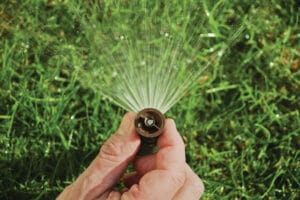One of the most common issues we see from our customers who are first time home owners, or are just creating or maintaining a lawn for the first time is the rate at which their grass grows.
There’s a misconception that if the lawn has already existed that sunshine and proper irrigation is all the grass needs to become the centerpiece of a suburban paradise. While these are crucial factors that should never be ignored, a lot of the initial issues start with the roots– the grass seeds or sod that actually grow the lawn.
While there are advantages and disadvantages to both techniques, there are a number of advantages that sodding your lawn can offer if your home landscaping budget can cover the additional (but worthwhile) cost.
Sodding allows for more noticeable results in a smaller timeframe and helps limit some of the maintenance that comes with soil management and nonstop weeding.
The real advantage of sod is saving your own time.
Since the grass is effectively “pre-grown,” (but don’t let that undermine the constant importance of proper watering techniques) it requires significantly less attention than your standard grass seed and will be presentable significantly faster.
Likewise, it is (usually) built to be more durable in less than ideal growing scenarios and can be the solution if your property has consistently had problems getting standard grass seed to grow. It also requires less frequent watering, which can be a long term money saver. In fact, one of the most common reasons that sod ends up destroyed is due to overwatering.
Of course, this doesn’t mean that sod is flawless.
Aside from the initial cost and need for professional installation, there’s also significantly less variety in grass choice, the possibility of improper growing conditions and a very small timeframe to plant after harvesting.
Since it’s manufactured and harvested elsewhere, there’s always a possibility that the conditions your lawn has might not match the ones the sod was grown in– without proper education, this can lead to a loss on your investment and your lawn worse than when it started. Likewise, the recommended time to plant your sod after its initial harvest is under 24 hours, which can be difficult if you haven’t allotted for that in your landscaping schedule.
Now, the takeaway here shouldn’t be that one type of grass is going to more advantageous than the other. Both sod and grass seed have their respective pro’s and con’s dependent on the circumstances that surround both the lawn and the homeowner.
But for somebody with the budget, sod can be an advantageous way to get lush grass in a short time with a decrease in maintenance time, which can often translate to saving more money in the long run.
And of course, always remember that your lawn is best maintained by a professionally installed watering irrigation system, designed and installed by professionals, in combination with proper lawn care and maintenance.






